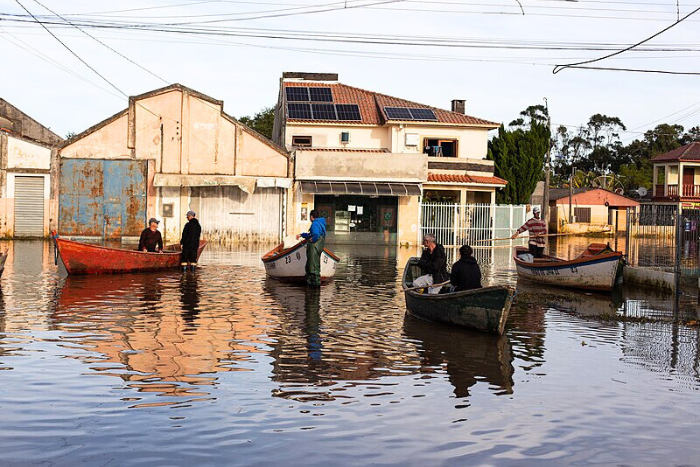El Niño played a similar role intensifying the rains, while failures in infrastructure worsened the damage, finds the study
According to a quick analysis conducted by a global team of top climate scientists from the World Weather Attribution organisation, climate change doubled the likelihood of the intense rainfall that caused devastating floods in the southern Brazilian state of Rio Grande do Sul in late April and early May. El Niño, a natural occurrence, also enhanced the heavy rains, and infrastructural failures to prevent flooding exacerbated the effects.
Between April 26 and May 5 this year, heavy rains in Rio Grande do Sul led to extensive flooding that affected more than 90% of the state. At least 169 people have perished in the floodwaters, and many more are still missing. Over 80,000 people were forced to evacuate their homes, while many more were impacted by water and energy shortages.
Impact analysis
Using peer-reviewed techniques, scientists compared how these kinds of events have changed between the colder pre-industrial climate and the current climate, with roughly 1.2°C of global warming, to determine the impact of human-caused warming on the floods.
The heavy rainfall event was an extremely rare event, expected to occur only once every 100-250 years in the current climate. But without the effect of burning fossil fuels, it would have been even rarer. Combining climate model output with weather measurements, the researchers calculated that the event became approximately 6-9% more powerful and more than twice as likely due to climate change.
With further warming, these events will become more frequent and destructive, the study warned. The analysis showed that if the world continues to burn fossil fuels and global temperatures increase 2°C compared to pre-industrial times, which is expected to happen in 20-30 years unless emissions are rapidly halted, similar rainfall events will be twice as likely than they are today.
The analysis also considered the role of the El Niño Southern Oscillation, a natural phenomenon that oscillates between neutral, La Niña and El Niño years. The world is currently experiencing the last effects of El Niño, which is associated with heavy rains in this part of the world. The researchers confirmed that El Niño played a role in the event that was similar to climate change. They estimate that it increased the probability of the event by a factor of 2-5 and made the rainfall 3-10% more intense
Need for better risk reduction measures
Forecasts and warnings of the floods were available nearly a week in advance, but the warning may not have reached all of those at risk, and the public may not have understood the severity of the impacts or known what actions to take in response to the forecasts. The study said that it is imperative to continue to improve the communication of risk that leads to appropriate, life-saving action.
The study also found that the failure of vital infrastructure, which was unable to contain the accumulating rainfall, was largely responsible for the damage. The population’s exposure to the effects was exacerbated by deforestation and the fast urbanisation of towns like Porto Alegre.
About The Author
You may also like
Rains Lash South India as Early Cold Wave Grips Central and Northern India
India launches National Red List Assessment to map extinction risks of 11,000 species
Investing in solar, storage can save Thailand close to $2 billion: Report
At least 10 dead in heavy rain in Maharashtra, Mumbai crosses 3000 mm threshold
Extremely heavy rain flood Punjab, over hundred killed, 2.5 million forced to flee

